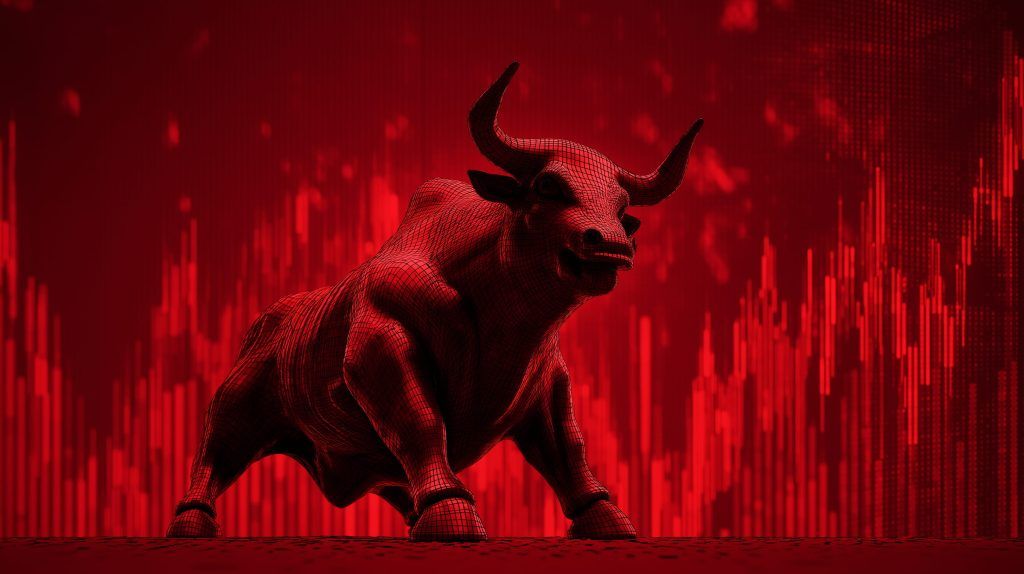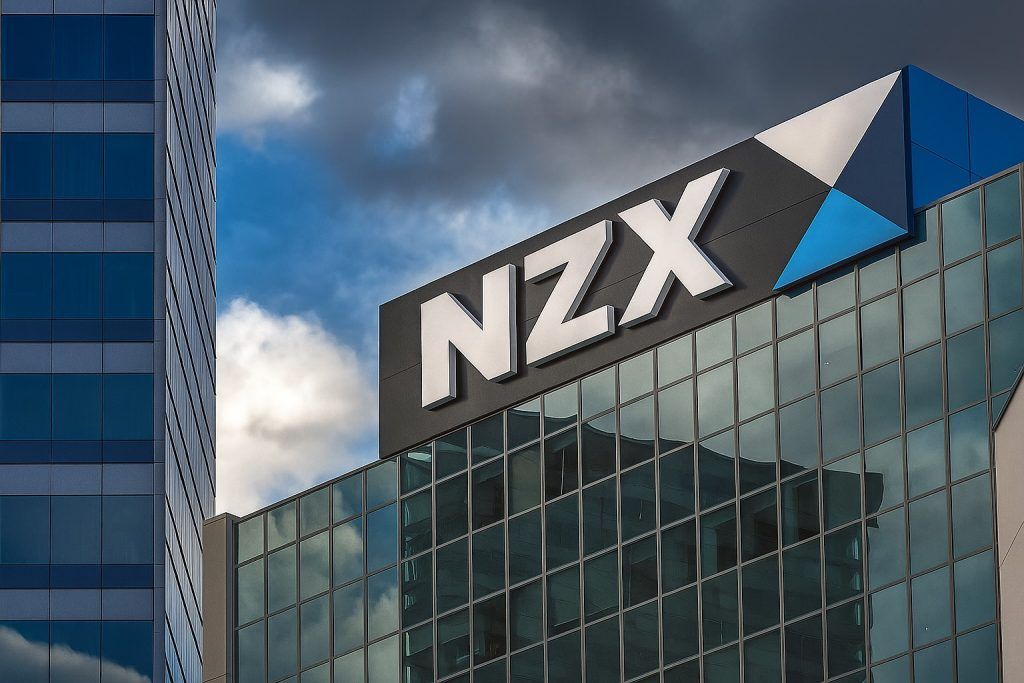Chinese and Hong Kong equities slumped on Friday, 21 November 2025, as a global sell‑off in technology and artificial intelligence (AI) stocks collided with mounting concerns about China’s slowing economy and cautious central bank policy. Major benchmarks on the mainland and in Hong Kong logged some of their steepest weekly losses of the year, with investors cutting risk ahead of year‑end. [1]
Key takeaways – China stock market today
- Shanghai Composite Index fell 2.45% to 3,834.89, with weekly losses around 4%, its worst week since late December 2024. [2]
- CSI 300 Index (large caps in Shanghai & Shenzhen) sank 2.44% to 4,453.61, its lowest level since October and capping a multi‑week slide. [3]
- Shenzhen Component Index dropped 3.41% to 12,538.07, while the ChiNext growth board tumbled 4.02% to 2,920.08, underscoring heavy selling in high‑growth tech and AI names. [4]
- In Hong Kong, the Hang Seng Index slid 2.38% to 25,220.02, a five‑week low, and the Hang Seng Tech Indexlost 3.21% to 5,395.49. [5]
- The sell‑off was driven by global tech weakness and AI bubble fears, uncertainty over U.S. Federal Reserve rate cuts, the People’s Bank of China’s (PBoC) decision to keep loan prime rates unchanged, and persistent worries over soft domestic data and property‑sector stress. [6]
1. Market snapshot: Mainland China and Hong Kong at the close
Mainland indices
According to official data from Xinhua and exchange statistics, mainland benchmarks closed sharply lower on Friday: [7]
- Shanghai Composite Index (SSE):
- Close: 3,834.89
- Daily move: ‑2.45% (‑96.16 points)
- Day’s range: 3,834.75 – 3,912.01
- Shenzhen Component Index:
- Close: 12,538.07
- Daily move: ‑3.41%
- ChiNext Index (growth / “China’s Nasdaq”):
- Close: 2,920.08
- Daily move: ‑4.02%
- CSI 300 Index (large‑cap A shares):
- Close: 4,453.61
- Daily move: ‑2.44%
- Four‑week slide leaves the index near a five‑week low. [8]
Turnover on Shanghai and Shenzhen combined surged to about 1.97 trillion yuan, up from 1.71 trillion yuan on Thursday, signaling heavy, broad‑based selling rather than a thin, illiquid move. [9]
Hong Kong indices
In Hong Kong, China‑linked shares fared no better. Xinhua and market‑data providers reported: [10]
- Hang Seng Index (HSI):
- Close: 25,220.02
- Daily move: ‑2.38% (~‑615 points), the lowest level in about five weeks.
- Hang Seng China Enterprises Index (H‑shares):
- Close: 8,919.78
- Daily move: ‑2.45%
- Hang Seng Tech Index:
- Close: 5,395.49
- Daily move: ‑3.21%, extending a multi‑day decline as investors reassess lofty AI‑related valuations.
Regional media and data from Trading Economics describe the Hang Seng’s drop as part of a “stocks in Hong Kong hit 5‑week low” pattern, underscoring how quickly sentiment has reversed after this year’s AI‑driven rebound. [11]
2. Global backdrop: AI bubble worries and Fed uncertainty
Friday’s China sell‑off did not happen in isolation. It came at the end of a brutal week for global risk assets, especially high‑growth technology names:
- On Thursday in New York, the Nasdaq Composite and S&P 500 suffered one of their sharpest one‑day swings since April, as investors questioned whether the AI boom can justify sky‑high valuations, even after blockbuster numbers from Nvidia. [12]
- A mixed U.S. jobs report clouded the outlook for Federal Reserve rate cuts, pushing traders to repeatedly re‑price the timing and depth of easing. Bond yields fell, but not enough to restore confidence in growth stocks. [13]
- By the time Asia opened on Friday, MSCI’s Asia‑Pacific ex‑Japan index was on track for its biggest weekly loss since early April, with Taiwan and South Korea down more than 3% intraday, according to regional summaries. [14]
Against that backdrop, Chinese tech and AI names were obvious targets for global de‑risking. A Finimize/MT Newswires brief noted that Chinese tech and AI stocks “tumbled in a broad selloff,” with the Shanghai Composite and Shenzhen Component both down by more than 2% and 3% respectively. [15]
In short: Wall Street’s tech panic spilled into Asia, and China — with its own AI and chip champions and a still‑fragile recovery — was hit particularly hard.
3. Mainland China: Growth jitters and policy fatigue
PBoC keeps rates on hold… again
Locally, investors are grappling with a central bank that is reluctant to ease further, even as economic data disappoints:
- On 20 November 2025, the People’s Bank of China left the one‑year Loan Prime Rate (LPR) at 3.0% and the five‑year LPR at 3.5% for a sixth straight month, matching widespread expectations. [16]
- Analysts cited by Reuters and Investing.com say the hold reflects a less dovish stance, with policymakers signaling they’re willing to tolerate slower credit growth amid concerns over financial stability and the yuan. [17]
For equity markets, that decision was a double‑edged sword. On one hand, it avoids stoking new asset bubbles; on the other, it disappoints investors hoping for a fresh liquidity boost after a string of weaker‑than‑expected economic readings.
Data: Momentum cools into Q4
Recent data releases have highlighted the challenge:
- Industrial output rose 4.9% year‑on‑year in October, down from 6.5% in September and the weakest pace since August 2024. [18]
- Retail sales grew just 2.9% year‑on‑year, the softest in over a year and a sign that consumption remains fragile despite government pledges to put domestic demand at the center of growth. [19]
- New home prices in October fell at their fastest monthly rate in a year, underscoring persistent property‑sector stress. [20]
Combined, this backdrop makes investors less willing to pay premium multiples for “new economy” stories and more sensitive to any global shock — such as this week’s AI and tech rout.
Friday’s move: broad selling, growth boards hit hardest
Friday’s trading pattern onshore fits that narrative:
- Major indices broke below recent ranges, with the Shanghai Composite closing near the lowest end of its intraday band and extending a multi‑session downtrend visible since mid‑November. [21]
- The CSI 300’s 2.44% drop took it below 4,460, leaving it down around 4% for the week — one of its worst weekly performances this year and the steepest since late December 2024, according to Reuters‑linked market commentary. [22]
- The ChiNext’s 4.02% plunge highlights how aggressively investors are now trimming exposure to smaller growth and AI‑themed names. [23]
Sector‑wise, Xinhua reported that shipbuilding names were among the few gainers, while lithium miners and non‑ferrous metals were hit particularly hard — likely reflecting concerns about EV demand, battery‑material pricing and the broader global cycle. [24]
4. Hong Kong: AI valuations, China proxies and global flows
If the mainland picture was gloomy, Hong Kong was the leverage point where global AI fears and China’s domestic worries combined.
Indices at multi‑week lows
- The Hang Seng Index’s 2.38% slide to 25,220.02 pushed it to a five‑week low, according to TradingView and Trading Economics. [25]
- The Hang Seng China Enterprises Index fell 2.45%, reflecting broad losses in mainland state‑owned and private giants listed in the city. [26]
- The Hang Seng Tech Index’s 3.21% drop left it near a three‑month low and capped its worst week since at least April, as summarized by Hong Kong financial media and regional commentators. [27]
A Marketscreener/MT Newswires note highlighted that Hong Kong stocks slumped “amid AI weakness and murky US economic signals”, with prominent China internet and EV names among the significant laggards. [28]
Why Hong Kong was hit so hard
Several factors explain why Hong Kong continues to trade with high beta to global tech moves:
- High concentration of tech and growth names
The Hang Seng Tech Index is packed with platform companies, chipmakers, hardware producers and AI infrastructure plays. These are precisely the stocks global macro and hedge funds use to adjust risk to the AI theme — both on the upside and downside. - China macro + U.S. Fed = double headwind
Investors in Hong Kong face domestic growth risk (property stress, slower retail sales, policy uncertainty) and external rate risk (whether the Fed will cut quickly enough to support global liquidity). This week, both sources of risk tilted negative. [29] - Year‑end profit‑taking and de‑leveraging
Several commentaries, including from Investing.com, note that Chinese market sentiment has weakened as 2025 draws to a close, with lower risk appetite, heavier de‑leveraging and more disciplined positioning in previously crowded trades. [30]
5. What today’s move tells us about sentiment
From “AI story” to “show me the earnings”
Through most of 2025, part of the China equity narrative has been that AI and digital‑economy names could decouplefrom slower “old economy” sectors. Friday’s action suggests that narrative is now being stress‑tested:
- High‑multiple tech names are under pressure as global investors ask whether AI‑driven revenue and profit growth can catch up with share prices. [31]
- Domestic growth concerns — including weak consumption and property woes — make investors even more cautious about paying up for long‑duration earnings stories. [32]
The result: valuation compression is hitting precisely the stocks that led this year’s rebound.
Policy support: Plenty of talk, limited new money (so far)
Beijing has stepped up rhetoric about boosting consumption and fine‑tuning policy — for example, the State Council recently emphasized the need to strengthen domestic demand and improve the quality of consumer goods and services. [33]
But markets are watching for harder actions, such as:
- Larger, more targeted fiscal support to households
- Stronger measures to stabilize the housing market
- More aggressive monetary easing or targeted credit programs
With the PBoC again holding the LPR steady, Friday’s trading suggests investors are not yet convinced that policy support will be strong enough to offset structural headwinds in property, local government finance and external demand. [34]
6. What this means for investors watching China stocks
This section is general market commentary and not personal investment advice.
- Volatility is likely to stay elevated
With global markets repricing AI and Fed expectations and China still digesting weaker data, swings like today’s move — especially in tech and growth — may remain common into year‑end. - Quality and balance‑sheet strength matter more
In risk‑off phases, markets usually reward cash‑generative, lower‑leverage companies over highly leveraged or speculative plays, even within the same sector. - Valuations have compressed, but not uniformly
- Some blue‑chip A‑shares and Hong Kong‑listed China majors trade at multi‑year low price‑to‑book or price‑to‑earnings ratios, reflecting years of de‑rating. [35]
- Others — particularly in AI infrastructure, semiconductors and certain internet niches — still price in robust growth trajectories, leaving them vulnerable to further disappointment if earnings or policy support underwhelm.
- Macro catalysts to watch nextOver the coming weeks, investors will focus on:
- Next batches of Chinese macro data – especially November PMIs, industrial output, retail sales and property indicators. [36]
- Any shift in PBoC signaling – markets will scrutinize speeches, liquidity operations and reserve‑requirement hints for signs of a more proactive easing stance. [37]
- Global tech earnings and U.S. inflation data – which will shape the path of Fed policy and, by extension, global liquidity and risk appetite. [38]
For now, Friday’s session sends a clear message: China’s stock market is still tightly plugged into global tech cycles, while domestic macro and policy uncertainties limit its ability to act as a safe haven when AI exuberance fades.
7. Quick FAQ: China stock market today (21 November 2025)
Why did China stocks fall today?
China stocks dropped mainly because global investors fled high‑growth tech and AI names after a sharp sell‑off on Wall Street, at the same time as domestic data and policy signals remained cautious. This combination hit sentiment in both mainland A‑shares and Hong Kong‑listed China plays. [39]
Which China indices were hit the hardest?
The growth‑heavy indices suffered the biggest blows:
- ChiNext: ‑4.02%
- Shenzhen Component: ‑3.41%
- Hang Seng Tech Index: ‑3.21%
Large‑cap benchmarks like the CSI 300 and Hang Seng Index also fell more than 2%, reflecting broad selling across sectors. [40]
Is this the worst week of 2025 for China stocks?
For several benchmarks, yes or close to it. Reuters‑linked reports describe this as the biggest weekly decline since late December 2024, with the Shanghai Composite down around 3.9% for the week and the Hang Seng capping its worst week since April. [41]
What should investors watch next?
Key signposts include:
- Upcoming Chinese macro data (growth, consumption, property)
- Any change in PBoC policy tone after holding LPRs steady
- Further signals from global central banks, especially the Fed, and how U.S. tech/AI stocks trade in the coming sessions
These will shape whether today’s move is a short‑term shake‑out or the start of a deeper correction in China’s stock market.
This article is for informational purposes only and does not constitute investment advice or a recommendation to buy or sell any security.
References
1. www.reuters.com, 2. english.news.cn, 3. www.investing.com, 4. english.news.cn, 5. english.news.cn, 6. www.reuters.com, 7. english.news.cn, 8. www.investing.com, 9. english.news.cn, 10. english.news.cn, 11. www.tradingview.com, 12. www.reuters.com, 13. www.reuters.com, 14. www.share-talk.com, 15. finimize.com, 16. www.reuters.com, 17. www.reuters.com, 18. www.reuters.com, 19. www.reuters.com, 20. www.reuters.com, 21. www.investing.com, 22. www.investing.com, 23. english.news.cn, 24. english.news.cn, 25. english.news.cn, 26. english.news.cn, 27. english.news.cn, 28. www.marketscreener.com, 29. www.reuters.com, 30. www.investing.com, 31. www.scmp.com, 32. www.reuters.com, 33. www.reuters.com, 34. www.reuters.com, 35. www.investing.com, 36. www.reuters.com, 37. www.reuters.com, 38. www.reuters.com, 39. www.reuters.com, 40. english.news.cn, 41. www.tradingview.com










